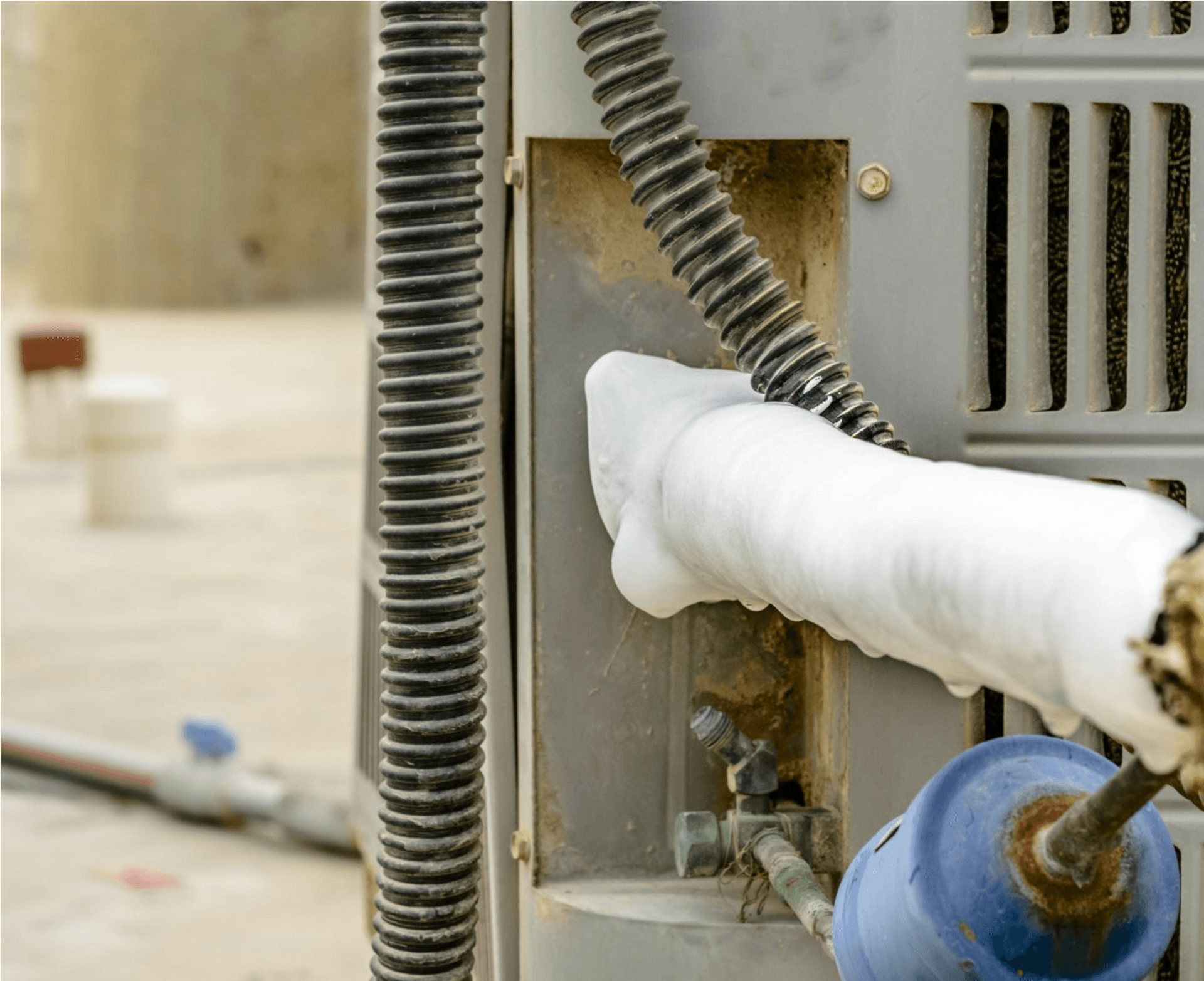How to Handle a Frozen AC Pipe: Professional Guidance
How to Handle a Frozen AC Pipe: Professional Guidance
Blog Article
Just how do you actually feel when it comes to Have a Frozen AC Line? Here’s How to Fix It?

Introduction
Discovering that your air conditioning pipe is frozen can be concerning, particularly during hot summer months when you depend on your air conditioning system the most. Understanding what to do in such a circumstance is important to stop further damages to your air conditioning system and ensure your convenience indoors.
Comprehending the Causes
Several aspects can add to the freezing of an AC pipeline. Comprehending these causes can help you resolve the issue efficiently.
Lack of Airflow
One common root cause of an icy air conditioning pipeline is inadequate air flow. When the air flow over the evaporator coil is restricted, it can cause the coil to drop below freezing temperature, causing ice formation on the pipeline.
Reduced Refrigerant Levels
Not enough cooling agent levels in your AC system can additionally cause an icy pipeline. Low refrigerant degrees can trigger the pressure in the system to drop, causing the freezing of wetness on the evaporator coil.
Cold Weather Conditions
In cooler climates, freezing temperatures outside can contribute to the cold of a/c pipes. If your a/c device is not effectively protected or if there are leaks in the ductwork, chilly air can infiltrate the system, triggering the pipe to freeze.
Dirty Air Filters
Filthy or clogged air filters can limit air flow in your AC system, causing various problems, including a frozen pipe. It's vital to change or clean your air filters regularly to make certain correct airflow and protect against ice accumulation.
Indicators of a Frozen A/c Pipe
Acknowledging the indications of an icy a/c pipeline is crucial for timely action.
Minimized Airflow
If you see a significant reduction in air movement from your vents, it could suggest an icy pipeline.
Ice Buildup on the Pipe
Noticeable ice accumulation on the cooling agent line or the evaporator coil is a clear sign of an icy air conditioning pipeline.
Unusual Sounds from the Unit
Unusual audios, such as hissing or bubbling, originating from your AC unit can signify that there's ice present on the pipeline.
Immediate Actions to Take
When confronted with a frozen AC pipe, it's necessary to act rapidly to avoid additional damage to your cooling system.
Switching off the air conditioner
The very first step is to turn off your air conditioner to avoid the system from running and aggravating the problem.
Checking for Blockages
Inspect the location around the interior device for any type of blockages that may be obstructing air movement, such as furnishings or curtains.
Defrosting the Pipe
You can make use of gentle techniques like putting towels taken in warm water around the frozen pipe to aid thaw it slowly.
Safety nets
Taking preventive measures can help stay clear of future events of an icy air conditioner pipeline.
When DIY Methods Fail
If your efforts to thaw the pipeline or address various other problems are not successful, it's time to contact a specialist.
Relevance of Hiring a Professional HVAC Technician
A licensed HVAC technician has the proficiency and devices required to identify and repair issues with your AC system securely and efficiently.
Regular Maintenance Checks
Set up regular upkeep checks with an expert HVAC technician to guarantee that your air conditioner system is running efficiently.
Changing Air Filters
Consistently replace or cleanse your air filters to stop airflow constraints and preserve optimum efficiency.
Protecting Exposed Pipes
If your AC pipes are exposed to cool temperature levels, take into consideration insulating them to avoid cold during winter season.
Seeking Professional Help
If DIY techniques stop working to resolve the issue or if you're unsure regarding exactly how to proceed, it's finest to look for aid from a qualified HVAC specialist.
Final thought
Handling an icy air conditioning pipeline can be a discouraging experience, but understanding how to respond can help minimize damages and recover convenience to your home. By understanding the reasons, identifying the signs, and taking prompt activity, you can properly address the concern and avoid future occurrences.
G UP? HOW TO FIX IT?
It happens all over America. And the rest of the world probably. It’s the hottest day ever and for some darn reason your AC isn’t cooling the house. You fiddle with the thermostat to try and fix the problem. Nada. All you can do now is go outside and check the AC unit. You make your way there and find your air conditioner unit is frozen! But how?
In this post we’ll cover how you can tell that your air conditioner has frozen (other than the obvious reasons), what could have caused the freeze, and some of the things you can do about your AC freezing up. And if you have a frozen heat pump condenser, read our blog about it to learn what to do! But remember, it is always best to avoid your AC freezing up with an AC tune up. And if you are moving into a home, it's critical to get HVAC inspection so that you are aware of an AC problems before you move in.
Keep reading and you may be able to fix the frozen AC yourself. If you can’t, call an HVAC specialist. If you live in Maryland, call SuperTech HVAC for AC repair. We’ll take care of it.
How Does An Air Conditioning Unit Work?
How you probably imagine an AC works is wrong. Contrary to popular belief, an AC system does not inject cool air into a building. Instead, it removes the heat from inside and transfers it outside. Cool huh? (Pun intended).There are 4 major components among the 3 stations of an air conditioning system: the evaporator coil, the compressor, the condenser, and the refrigerant – a special chemical that links everything together through a closed loop system.
Station 1:
Warm indoor air is sucked into the return vent, through a filter, and blows over the evaporator coil. The heat is absorbed into the cold refrigerant, turning it from liquid to gas. The air, which is now cool, is blown back into the home to areas that your thermostat, i.e. you, has decided.
Station 2:
The refrigerant makes its way outside the house to the compressor, which squeezes the warm refrigerant, raising its gaseous temperature even more.
Station 3:
When the super hot vapor refrigerant reaches the condenser, the last step, the heat is expelled and absorbed into the outdoor air. The refrigerant instantly cools, which changes it from gas back to liquid form. The cold liquid refrigerant is now ready to return to station 1 and repeat the process.
Is Your AC Freezing Up? Here Are The Signs:
As you may have guessed, your air conditioner unit freezing up on a hot day is not normal.
If this happens, there's no need to panic. Often the issue can be solved with a little troubleshooting. If the AC unit is left frozen for too long however, you may find yourself with a bigger problem.
First things first, how do you know your AC is frozen?
Well, the obvious sign is the ice on your refrigerant line-set pipe. Simply check between your outdoor AC unit and your home's exterior wall to see whether your AC line frozen.
You might also have a frozen evaporator coil. This one's not as easy to check. You'll need to open a panel on the indoor unit to inspect. Don't do this unless you're handy. If you aren't, call an HVAC pro like SuperTech HVAC or you may damage something in the process.

I'm certainly very intrigued by Air Conditioner Frozen? How To Fix your Frozen AC Line and I'm hoping you liked the new blog entry. Enjoyed our blog? Please share it. Let another person discover it. Thanks a lot for your time. Come back soon.
Recurring Service Plans Report this page